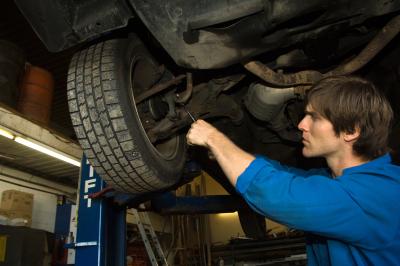
A car's rear differential is responsible for distributing equal torque to the wheels. Torque measures how much a force acting on a body causes that body to rotate. It is essential to properly distribute torque in a vehicle; otherwise some wheels would receive more power than others.
A differential is an intricate arrangement of gears. The ring gears and "side" gears in the differential receive input power (from the input shaft) generated by the car's engine, and start to spin the left and right output shafts.
Differentials are needed because when cars turn corners, some wheels have to rotate more than others. If a car always went straight, a car's driveshaft would work just as well as a rear differential.
The open differential type is the simplest. However, its biggest problem is that, when a wheel slips and the other one retains traction, all the power will go to the slipping wheel. This mean one wheel will spin fast and the other one will remain stationary.
Limited slip differentials, such as the clutch-type and the locking-type, are able to avoid the problem of the open type differentials by maintaining the speed difference between wheels.
In an active differential system, torque distribution is based on values--such as angle and acceleration--from electronically-controlled systems.